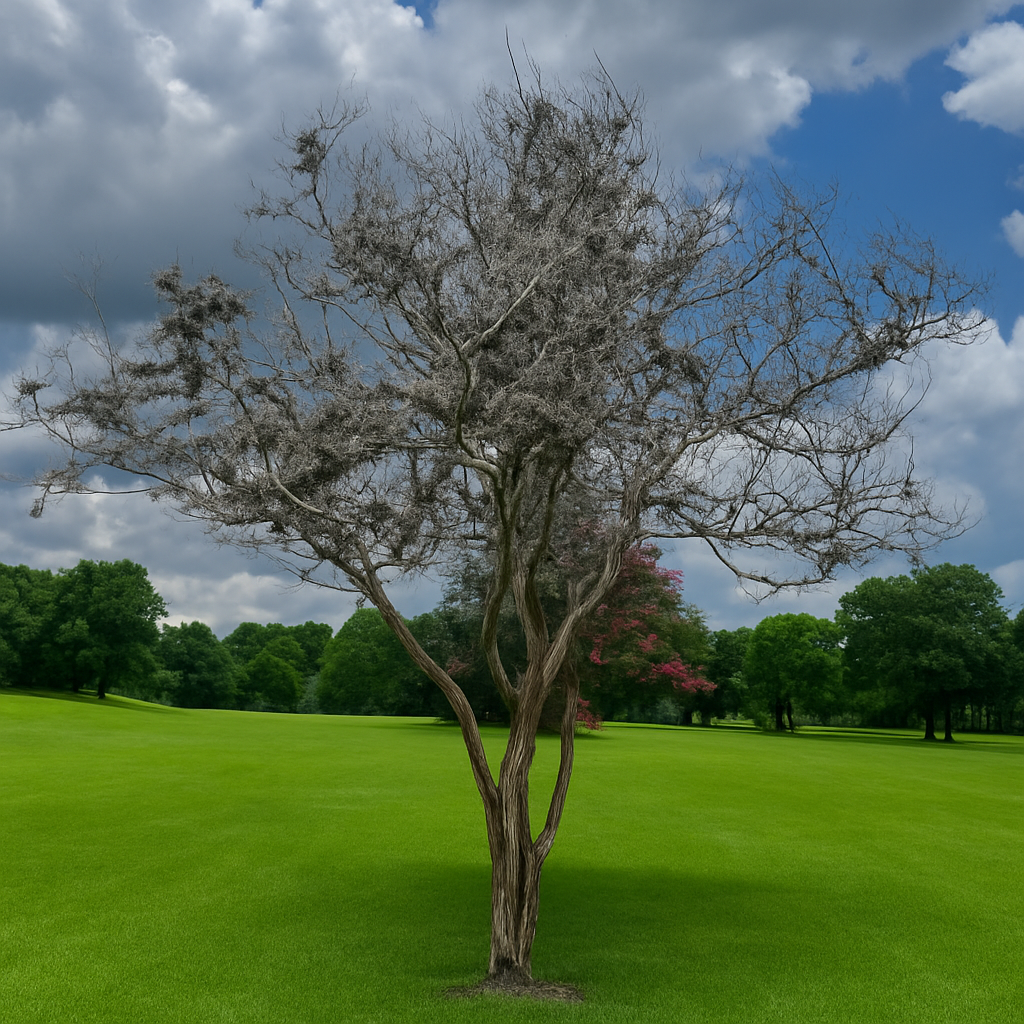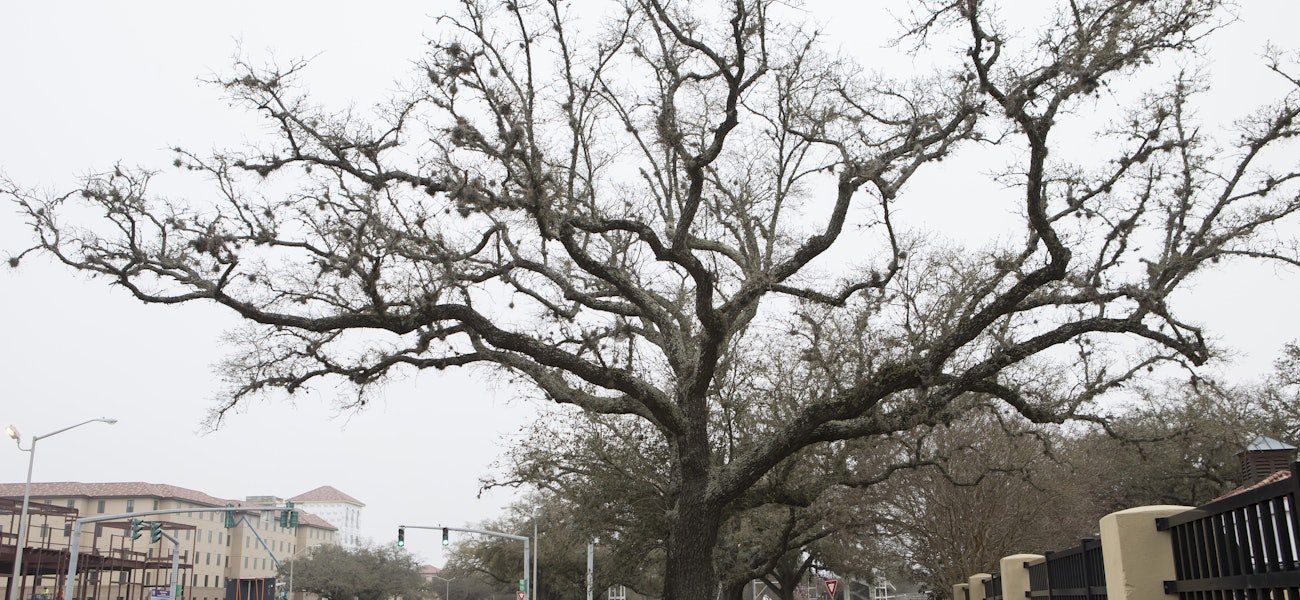
Impact
Ball moss might look harmless, but it’s not. The sooner we catch it, the easier it is to manage—and the better we protect Baton Rouge’s trees, homes, and public spaces.
Why Trees Matter—and Why Ball Moss Puts Them at Risk
Baton Rouge is known for its tree-lined neighborhoods and shaded parks. In fact, we have one of the highest urban tree canopies in the country, with over 55% coverage. Trees here aren’t just beautiful—they:
Clean the air and cool our homes
Prevent flooding by absorbing stormwater
Boost property values
Reduce stress and make our neighborhoods healthier
But these benefits are under threat.
The Problem: Ball Moss Is Spreading Fast
Ball moss is showing up across the Baton Rouge area—in residential yards, business corridors, and even our most iconic trees. It causes serious harm when not removed as it is an evergreen plant that will not die without human intervention .
The Impact on Trees
🌞 Blocks Sunlight & Airflow
Dense clusters of ball moss smother branches, blocking sunlight and reducing airflow. This weakens photosynthesis and encourages moisture buildup—especially in shaded, crowded, or unhealthy trees.
💧 Weakens Tree Health
Ball moss creates a damp, low-light environment around the branch, similar to drought stress. It makes it harder for the tree to grow, heal, or fight off disease.
🌳 Breaks Limbs
When ball moss grows in large numbers, especially in wet weather, it adds weight to small limbs and twigs. This can cause them to crack or break, especially in wind or storms.
Why It Matters for Baton Rouge
From Spanish Town to the LSU campus, ball moss is spreading rapidly. If we don’t act soon, it could:
Damage our urban canopy
Cost homeowners and businesses more in tree care
Reduce the beauty, shade, and value of our city
